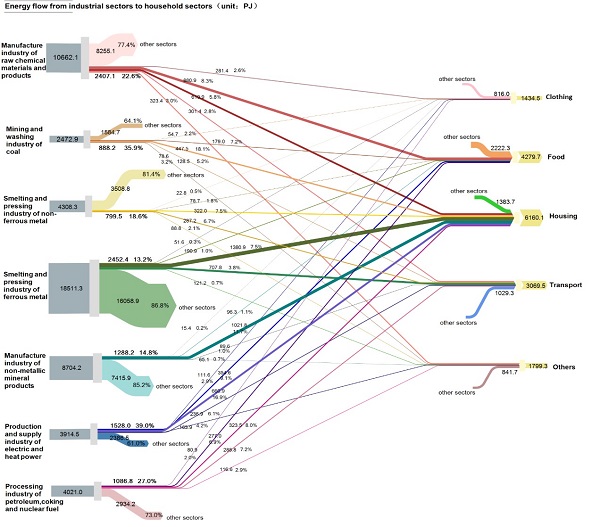Recently, Ph.D. student Ding Qun as the first author, Associate Professor Cai Wenjia as the Corresponding Author published an online Research papers entitled "The relationships between household consumption activities and energy consumption in china- An input-output analysis from the lifestyle perspective " in "Applied Energy". The collaborators include Prof. Wang Can from Tsinghua University School of Environment and Prof. Mukul Sanwal, Senior Advisor of the former United Nations Environment Program.
With the industrialization of China, the acceleration of urbanization process and the upgrading of the consumption structure of the residents, the expansion of domestic demand in China's economic development is becoming increasingly evident. At the same time, the family sector has also become an important terminal energy consumption sector and greenhouse gas emissions, the impact of consumer spending on energy consumption can not be ignored. In addition to the direct living energy consumption shown in the Energy Statistics Yearbook, household consumption activities indirectly affect the energy consumption of various sectors such as construction, transportation, manufacturing, electricity supply and so on. However, the corresponding relationship between the consumption behavior of residents and the energy consumption of the industrial sector has yet to be revealed, and the potential changes of energy saving and emission reduction of consumption is also needed. This study combines consumer lifestyle analysis and input-output analysis, and studies the impact of various consumer behavior, such as clothing, food, housing, and other consumer behavior on China's energy consumption, and the energy linkages between household and industrial sectors. Combined with the future consumption scenarios to explore the policy of helping residents to green consumption policy arrangements. The aim of this study is to raise concerns about energy consumption demand side management, to scientifically measure indirect energy consumption for household consumption, to identify opportunities for emission reduction from a demand-side perspective, and to contribute to sustainable development.
It is estimated that China’s energy consumption caused by household consumption activities in 2012 is 29141.97 PJ in total, which accounts for 24.7% of the total final energy consumption. The indirect energy consumption of household consumption activities is 1.35 times more than the direct energy consumption. Housing activities cause the most indirect energy consumption, and the smelting and pressing industry of ferrous metal is the most energy-consuming industrial sector influenced by household consumption. The study also find that adopting low-carbon consumption pattern and accelerating the decrease of energy intensity are both effective means to reduce the total energy consumption by scenario analysis. Finally the energy conservation potential by comparing different types of household consumption behaviors is revealed to make policy makers form vivid impressions on the importance of demand side regulation.

Fig 1. Energy flow from industrial sectors to household consumption activities.
Based on the above results, this study puts forward specific policy suggestions for future energy consumption demand side management and low carbon behavior guidance. These suggestions have good guidance and reference significance for China's low carbon development in the future.
According to the Thomson Reuters2016 Annual Report, the "Applied Energy" impact factor for 2016 was 7.182.
Qun Ding, Wenjia Cai, Can Wang, Mukul Sanwal. The relationships between household consumption activities and energy consumption in china— An input-output analysis from the lifestyle perspective. Appl Energy (2017),.doi.org/10.1016/j.apenergy.2017.06.